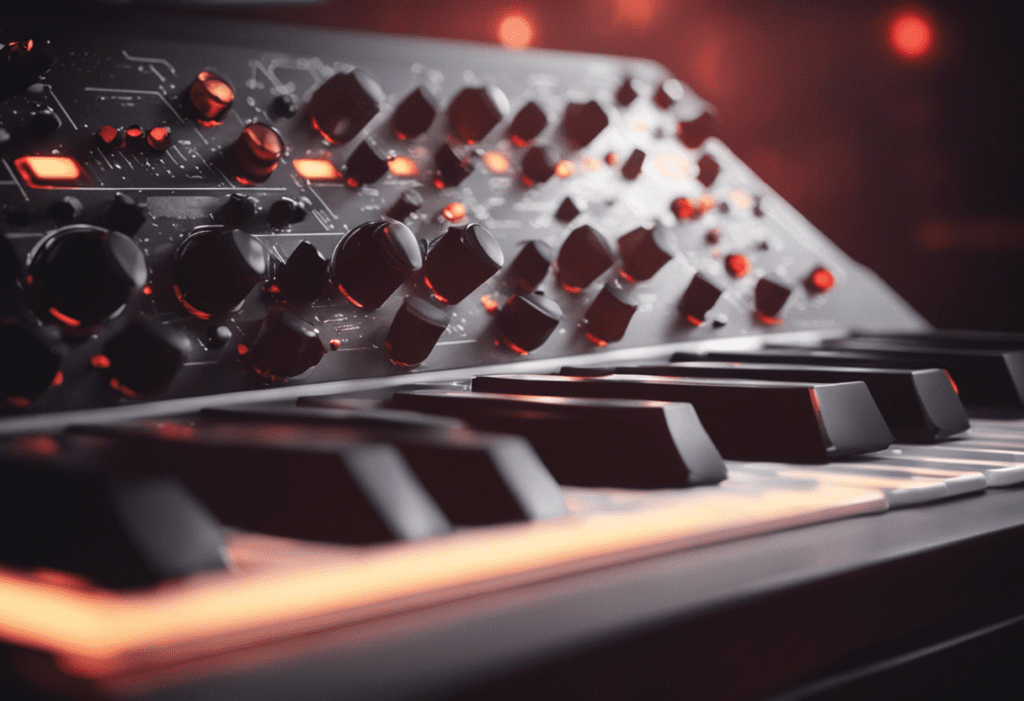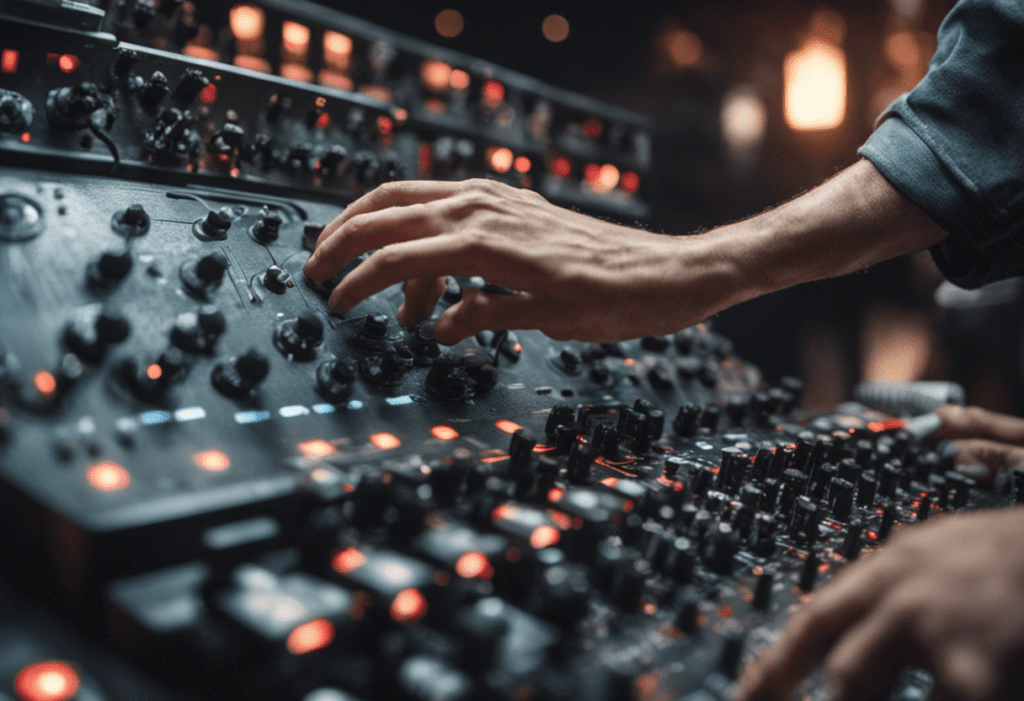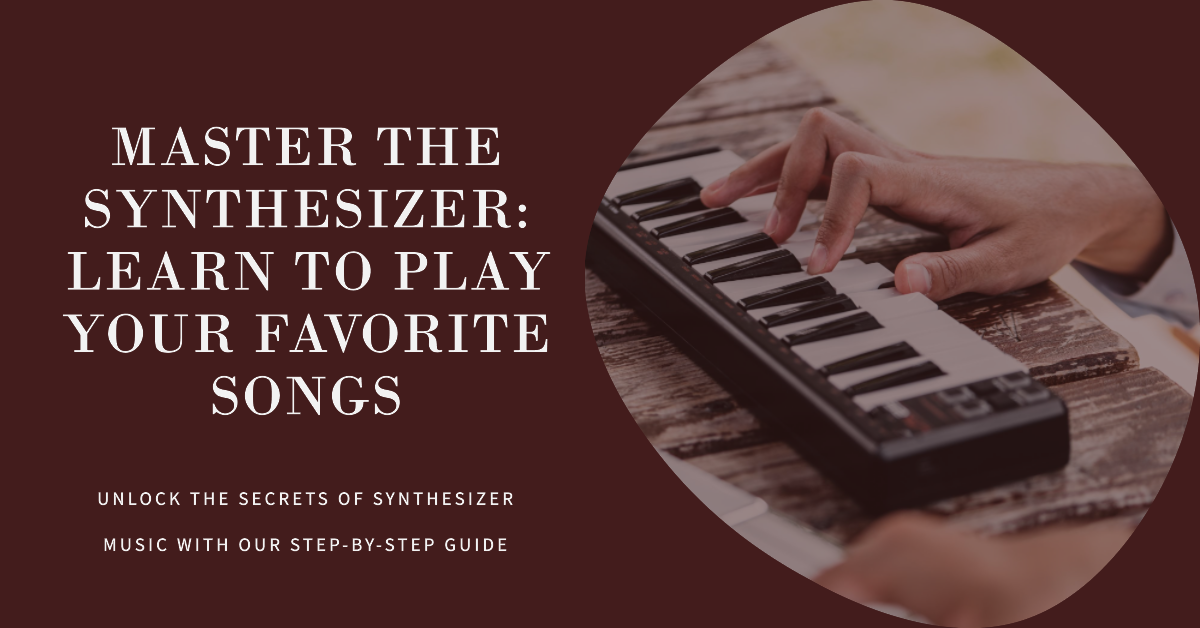Have you ever listened to a song with cool electronic-sounding music and thought “I want to make sounds like that!”? Well, with a synthesizer you can! A synthesizer, also called a synth, is an electronic instrument that can create all kinds of sounds, from pianos and guitars to spacey bloops and beeps.
While it may look complicated, anyone can learn to play a synth with a little bit of practice. In this article, I’ll explain the basics so you can start playing your favorite songs on a synthesizer.
Choosing a Synthesizer
First, you’ll need to get a synthesizer. The most common type is a keyboard synth, which is a keyboard with synthesizer sounds built in. Some popular starter models are the Korg Volca Keys, Arturia MicroFreak and Novation Mininova. These are affordable and easy to learn on. Synthesizers can also come in drum machine styles like the Korg Volca Beats.
I recommend starting with a keyboard synth since they allow you to play melodies and harmonies. The keys are laid out just like a piano. Later you can add other groovy synths to your collection!
Understanding the Different Parts
A synth has a few main components that work together to create sounds. Here’s a simple breakdown:
- Oscillators – These create the basic waves and tones, like sine, square or sawtooth waves.
- Filters – These shape the basic sound by cutting or boosting frequencies. For example, a low-pass filter can remove the high frequencies so the sound is smoother.
- Envelopes – These control how the volume and tone change over time when you press a key. This adds expression.
- LFOs – These oscillators modulate or change the sound in repeating patterns to add movement.
- Effects – These add elements like delay, reverb and distortion.
Don’t worry about learning all the technical details yet. Just focus on turning knobs and seeing how they affect the sound!
Playing with the Preset Sounds
When you turn on a synth for the first time, it will be loaded with preset sounds. These are created by synth programmers and give you cool sounds to start with. Common presets are pads, leads, basses and effects.
Pads create atmospheric, sustained backgrounds. Leads play melodies. Basses provide low-end rhythms, and effects like swishes add flair. Try playing with the presets to get familiar with how the synth works. Tweak them by turning knobs and seeing how it changes the sound. Then save tweaked presets you like.
Learning Synth Technique
It takes practice to develop smooth synth playing skills. Good posture and hand position help. Sit up straight at the keys. Keep your wrists low and relaxed. Curve your fingers gently so the tips press the keys. Use all your fingers, not just one or two. This allows you to play quickly and accurately.

Start slow and be patient! It will take time to get used to playing on light, springy synth keys. Some have more resistance to help build your finger strength. Stay relaxed and don’t pound the keys. Press gently and play smoothly.
Connecting Devices
There are a few ways to connect your synth to other gear. The most common is MIDI, which sends data between devices. For example, you can connect your synth to a computer with a MIDI cable. Then you can record MIDI data from the synth into music software like Ableton or GarageBand.
You can also connect using regular audio cables. For example, plug into an audio interface to record the actual sounds into a music program. Or hook up to speakers, a mixer or an amp with audio cables to amplify and broadcast your playing.
Learning Songs on Synth

Once you’re comfortable playing your synth, it’s time to learn some actual songs! Start with simple songs you like with basic melodies, like Mary Had a Little Lamb or Twinkle Twinkle Little Star. Here are some steps for learning a tune:
- Listen to the song and pick out the melody. Can you hum it?
- Figure out the key the song is in. What feels like the home note it resolves to?
- Determine the notes by ear or look up the melody sheet music.
- Find a preset sound that fits the vibe of the song.
- Slowly pick out the melody one note at a time. Don’t rush! Get each note right.
- Now add your own harmony notes that complement the melody. Develop the basic chords.
- Finally, create a simple bassline that grooves with the chords.
Keep practicing the song until you can play it comfortably. You’re on your way to synth stardom!
Improving Your Skills
Mastering the synthesizer takes time. But with regular practice, you can level up your skills. Here are some tips:
- Set aside consistent time to play every day. Even 15 minutes helps.
- Change up presets and sound design to learn how synths work.
- Look up some music theory to understand keys and chord progressions.
- Learn songs in different styles – pop, rock, classical, etc.
- Try improvising your own melodies and riffs.
- Jam along to songs you like or with friends.
- Watch tutorials to pick up new techniques and expand your knowledge.
Take inspiration from synth greats like Depeche Mode, Daft Punk, Brian Eno, Chvrches, Grimes and Owl City. The world of electronic music awaits you!
Start Playing Synths
I hope this beginner’s guide gets you excited about making your own tunes on a synthesizer. Synths offer so much creative potential. With just a few keys, knobs and buttons, you can produce an infinite variety of sounds. Learning synthesizer will expand your musical skills and let you play songs in new electronic styles.
The most important thing is to have fun with it! Don’t worry about mistakes. Be willing to explore and experiment. There’s no limit to what you can create. Now get tweaking those knobs and playing those keys! The world of synthesized sound is at your fingertips.





